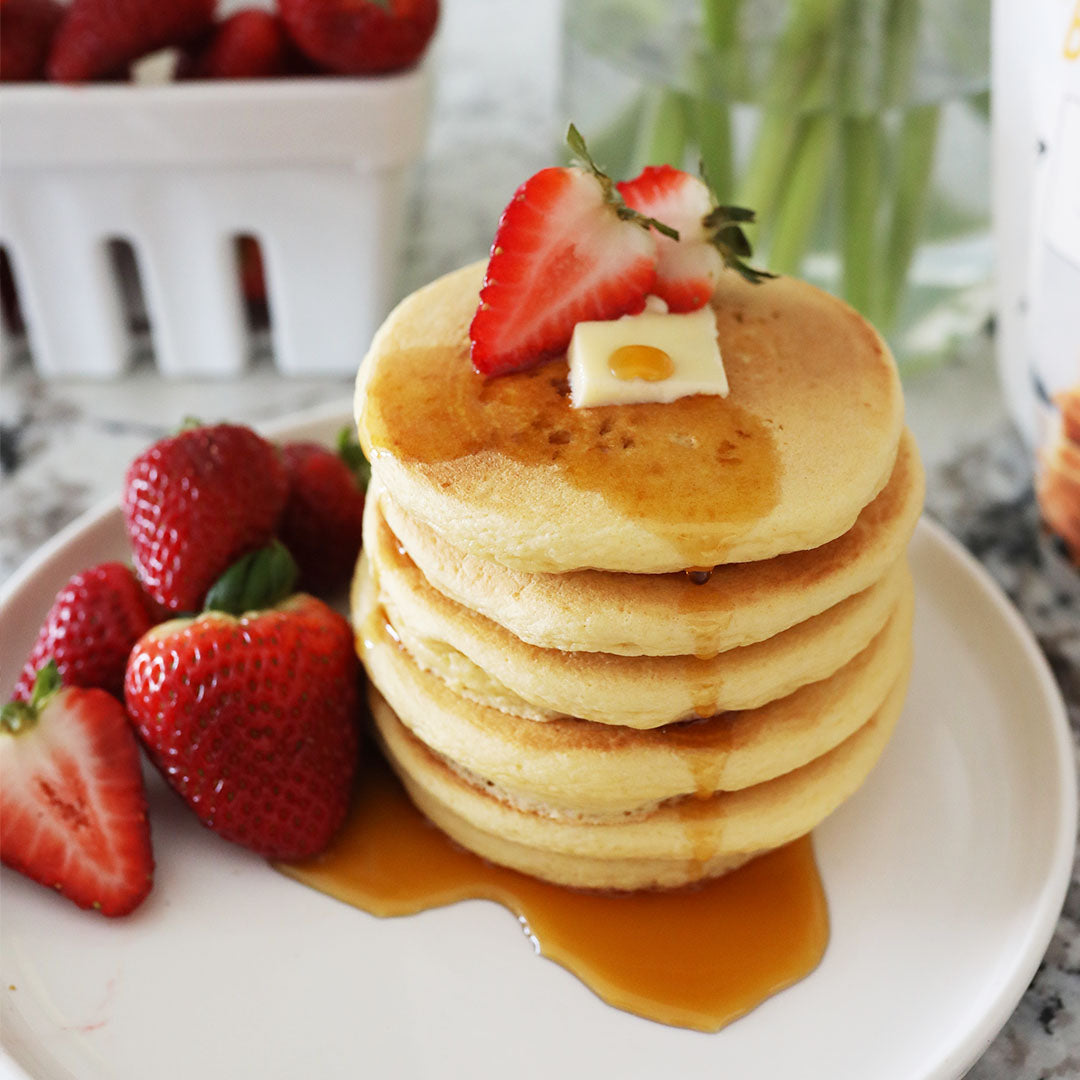5 Ways to Make Gluten-Free Eating Easier

Share
At True Taste, we understand that transitioning to a gluten-free lifestyle can feel overwhelming at first. Whether you’re managing a gluten intolerance, celiac disease, or simply looking to reduce gluten in your diet, navigating the world of gluten-free eating doesn’t have to be complicated. We are so passionate about providing allergen-free, nutrient-packed breakfast options, that we’ve gathered five tips to help make gluten-free living more accessible and enjoyable!
1. Stock Up on Gluten-Free Staples
The first step to making gluten-free eating easier is to have the right foods readily available. Keep your pantry stocked with gluten-free essentials like quinoa and naturally gluten-free flours (such as almond flour or our very own waffle mix). Having these on hand ensures you always have a go-to option for meals, snacks, and even indulgent desserts. Don’t forget to stock frozen gluten-free products like waffles, which make breakfast a breeze on busy mornings! If you are stocking up and wondering what to avoid, click here for my no-no gluten-free list.
2. Learn to Read Labels Carefully
Gluten can sneak its way into foods where you least expect it. That’s why reading ingredient labels is crucial when transitioning to a gluten-free diet. Many processed foods contain hidden gluten, often in the form of wheat, barley, or rye. Look for certified gluten-free labels or foods that are naturally gluten-free. Apps like Find Me Gluten Free or Gluten-Free Scanner can help you quickly verify if a product is safe.
Here is a list of the types of ways you can find gluten on labels:
- Wheat
- Barley (including barley malt)
- Rye
- Triticale (a cross between barley and rye)
You also want to avoid:
- Spelt
- Semolina
- Wheat germ
- Cracked wheat
- Wheat bran
- Wheat starch
- Couscous
- Einkorn
- Durum
- Matzo
It is also important to note that not all gluten-free products are healthy. To avoid this, I try to remember these things: shop and search for products with shorter ingredient lists, especially ones you can pronounce and recognize, this generally translates to less processed and more nourishing.
3. Learn how to prepare gluten-free
There of course, are differences when it comes to preparing gluten-free food. Here are some of the tips I have learned along the way:
- Use a Large Pot When Boiling Gluten-Free Pasta. Gluten-free pasta tends to release more starch, creating foam that can overflow. To prevent boiling over, use a bigger pot and fill it two-thirds of the way.
- Gluten-free pasta needs moisture right after cooking to avoid becoming mushy. Toss it with sauce immediately after draining, or add oil to keep it from drying out.
- Place leftover pasta in a well-sealed, lightly oiled container to keep it from falling apart or drying out.
- Avoid using the microwave to reheat gluten-free pasta as it can harden. Steam it with ½ inch of water for five minutes to maintain an al dente texture.
- Gluten-free wraps often split or crumble. Heat them in the microwave for 5-10 seconds to make them more flexible and easier to work with.
- Gluten-free baked goods brown faster. Lower the oven temperature and bake a little longer, checking frequently to ensure even baking.
- Gluten-free baked goods don’t store well in the fridge. To prolong their shelf life, keep them at room temperature or freeze them after cooling completely.
4. Embrace Whole Foods
One of the easiest ways to avoid gluten is by sticking to whole, naturally gluten-free foods. Fresh fruits, vegetables, lean proteins, and healthy fats like avocado are all gluten-free by nature. These foods are packed with nutrients, making them the foundation of a balanced gluten-free diet. For breakfast, pair our frozen waffles with fresh fruit and dairy-free yogurt for a satisfying meal without the gluten.
5. Experiment with Gluten-Free Recipes
Going gluten-free opens up a world of new recipes to try. Instead of focusing on the foods you can’t eat, take the opportunity to explore gluten-free alternatives to your favorite dishes. Swap wheat flour for gluten-free flours in baking, or try making gluten-free versions of classic comfort foods. With so many options available today, from gluten-free pizza crusts to pancakes and, of course, our delicious waffles, there’s no need to feel deprived! For a few of my favorite gluten-free recipes click here.
Living gluten-free may seem challenging at first, but with the right mindset, tools, and products, it can quickly become second nature. We want to make your gluten-free mornings easier and tastier with our allergen-friendly, nutritionist-approved waffles and mixes. Whether you’re just starting your gluten-free journey or are a seasoned pro, remember that every step towards healthier eating is a step in the right direction.
Gluten-free living doesn’t have to be hard—it’s all about finding the right balance and resources that work for you.



